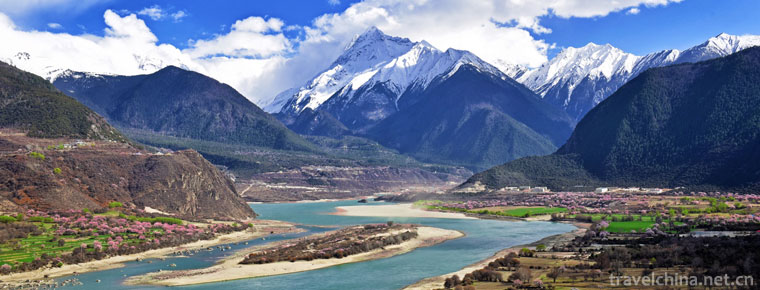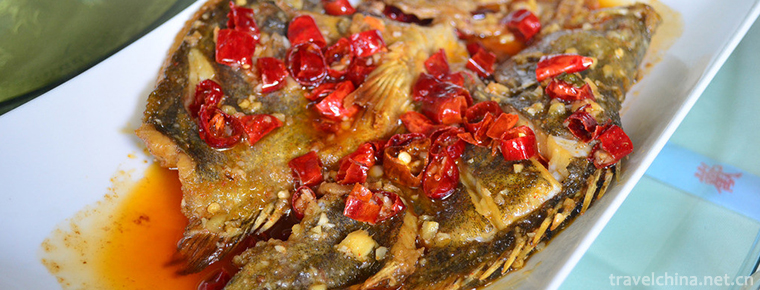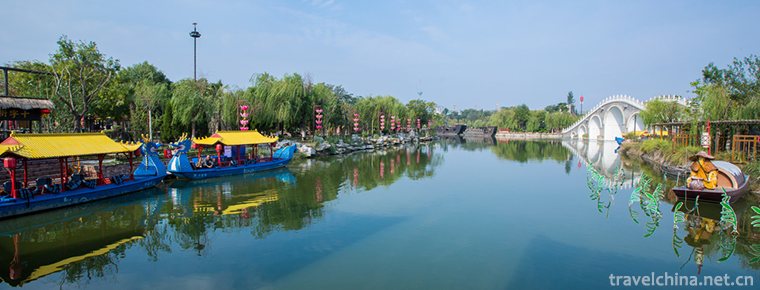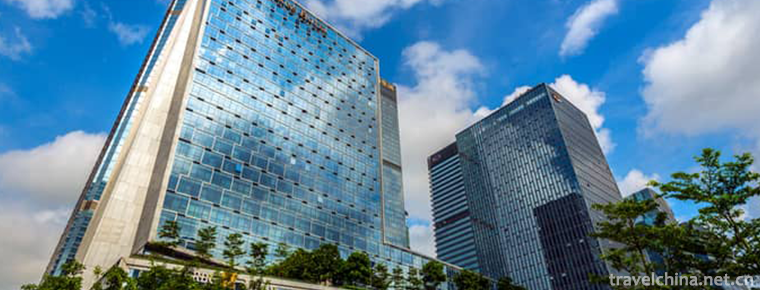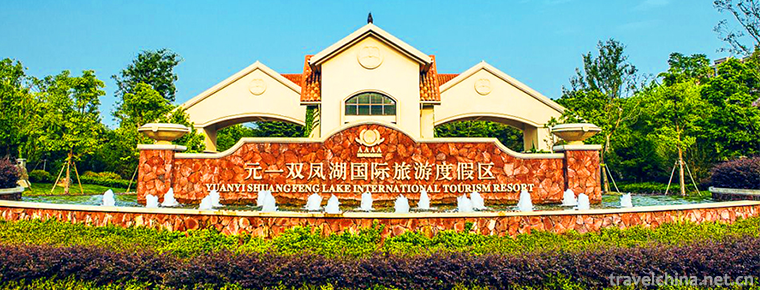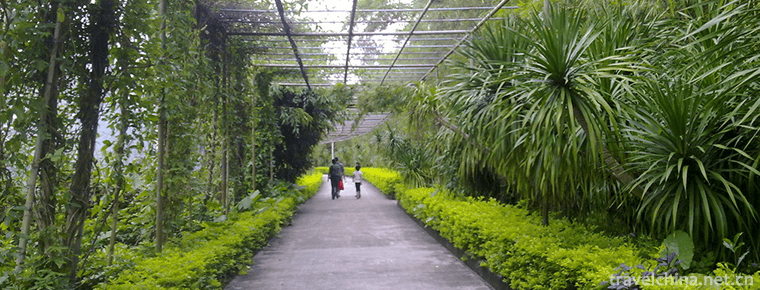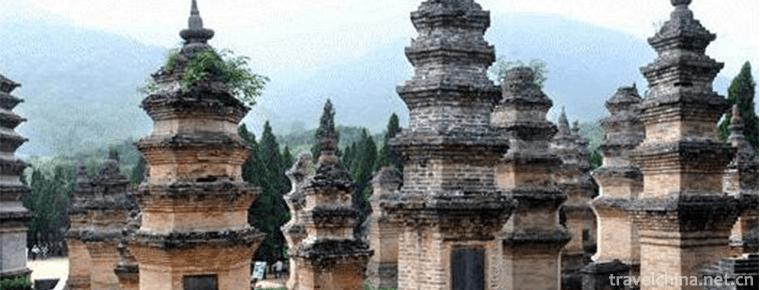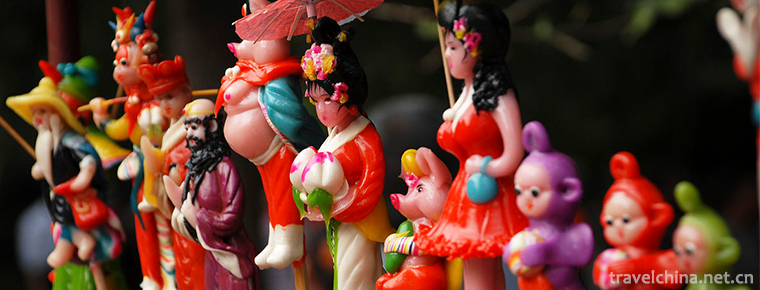Construction Techniques of Tibetan Diaolou
Construction Techniques of Tibetan Diaolou
Gabu Tibetan ancient building complex is located on the second terrace on the north-east Bank of Mako River, 3 kilometers northeast of Lighthouse Township, Banma County, Guoluo Tibetan Autonomous Prefecture, Qinghai Province. This kind of Tibetan architecture is more common in the Marco River Basin, and its distribution is scattered, but it is concentrated in the village of Gabzhu. These dwellings have a history of about 300 years. Due to the long-term war and the fighting among tribes, a large number of Tibetan dwellings have been built in Banma, especially in the Marco River Basin.
On June 7, 2008, Tibetan blockhouse construction techniques were approved by the State Council and listed in the second batch of national intangible cultural heritage list.
geographical position
Gabu Tibetan ancient building complex is located on the second terrace on the North Bank of Mako River, 3 kilometers northeast of Lighthouse Township, Banma County, Guoluo Tibetan Autonomous Prefecture, Qinghai Province. There are 21 Tibetan-style ancient buildings, covering an area of 18,000 square meters. This kind of Tibetan architecture is more common in the Marco River Basin, and its distribution is scattered, but it is concentrated in the village of Gabzhu. These dwellings have a history of about 300 years. Due to the long-term war and the fighting among tribes, a large number of Tibetan dwellings have been built in Banma, especially in the Marco River Basin.
Architectural features
These Tibetan residential buildings are quite distinctive. They are generally built on high platforms or on top of hills. The building materials are mainly stone, supplemented by wood, and stone walls are easy to defend and difficult to attack, so as to ensure safety. The whole building is about 10 meters high, with flat roofs, interlaced walls of stone and wood, and interstitial loess masonry. The first floor of the barn is four beams and eight columns. Each floor is connected by a single wooden ladder, which is made of the whole log. On the one hand, it is easy to cut down and smooth, while cutting out a ladder slot. On the other hand, this ladder can move freely, on the other hand, it can prevent uninvited visitors. The second floor is mainly composed of living rooms, halls, kitchens and corridors. The rooms are separated by cross-wood walls, with windows and flues on the outer walls. The flue entrance is generally triangular, 20 cm high and 10 cm wide, and is reserved on the back wall. The window is built on the side wall. Its shape is large, small and rectangular. The outer edge of the window is 30 centimeters high and 20 centimeters wide. The inner edge is 40 centimeters high and 30 centimeters wide. Its use has two aspects: lighting and defense. The outer edge of the house is separated by a wicker fence wall. The corridor is 1 metre wide and there is a toilet at the corner. The third floor is the Jingtang and the warehouse, and the outer wall has a lookout. Walls, doors and windows, ceiling and single wooden ladder are all of their own characteristics, and they are not painted.
Inheritance value
It was built by special Tibetan masons. Because the complex is rare, it has high artistic and research value in studying the living habits of ancient Tibetan groups and Tibetan architectural techniques.
Entering Tibetan
Crossing snow mountains, stepping grasslands, Gorges and torrents, in the hinterland of the Qinghai-Tibet Plateau, located in Banma County, Guoluo Tibetan Autonomous Prefecture, Qinghai Province, at an altitude of more than 3500 meters, there is a "secret land" covered by primitive forests. Here lies the Banma Tibetan Blockhouse Group, one of the most well-preserved Tibetan Blockhouse Communities in China.
One afternoon in June, reporters came to Banqian village, the most concentrated Tibetan blockhouse. As soon as we entered the village, we saw many towers facing the valley, standing in the sun, mossy walls and mottled wooden doors.
Guo Haimin, deputy director of Banma County Cultural and Sports Broadcasting and Television Bureau, told reporters that the Tibetan blockhouse in Banma is divided into three types: stone blockhouse, wooden blockhouse and mixed blockhouse, among which stone blockhouse is the most distinctive. The exterior wall is made of stone flakes. According to the structure similar to mortise and tenon, the size of the wall is interlocking and cross-vertical, so that the wall is uniform in force and not easy to crack and tilt.
Bunker history
According to Zhang Junqi, an expert of the Qinghai Institute of Cultural Relics and Archaeology, the Tibetan Diaolou in Banma, known as "Kuaige", can be traced back at least 800 years ago, mainly distributed in the villages of Banqian, Kopei and Gerize in Lighthouse Township. Among them, there are nearly 100 Diaolou in Banqian Village, most of which have a history of more than 300 years.
Climbing up to the roof, I saw a bright future. The river flows slowly through the valleys. The pebbles on the bottom of the river are clearly visible. From time to time, fish jump out of the water. On the other side of the river, at the foot of the mountains are farmland, and the top of the mountain is covered by patches of virgin forest. Under the sunshine, the fog rises in the forest, and even the shadow of the cloud can be seen moving slowly on the ground. In the fields and dense forests, many towers are built according to the mountains, just like the legendary vault in the sky.
According to Guo Haimin, before the 20th century, Banma was once one of the important trade routes in southwestern China, the ancient tea-horse road. The commercial road from Sailaitang to Tibet, the seat of its county government, was historically known as the "Saixi ancient road". While bringing wealth to Banma, businessmen and businessmen also brought the architectural styles of Sichuan, Gansu, Tibet, Tibet, Han and Yi nationalities to Banma, which made Banma Diaolou not only learn from the people's strengths, but also have its own characteristics.
Bunker preservation
Zhibo Diaolou, located in Zhibo Village, Songgang Township, Malkang County, Sichuan Province, was built during the reign of Qianlong in the Qing Dynasty. It is 43 meters high and has tilted 2.3 meters. It has survived three major earthquakes and is known as the "Leaning Tower of Pisa" in China. In July 2001, Zhibo Diaolou was recognized by the State Council as the fifth batch of key cultural relics protection units in China.
Zhibo Diaolou, Tibetan meaning "Guanzhai at the mouth of the canyon", is divided into two parts, north and south, built according to the mountain situation, South Diaolou in the village, North Diaolou in the North Ridge of the village. The two towers are about 50 meters apart.
Straight wave towers are 43 meters high, octagonal outside and circular inside. They are built with stone. The two pillars have distinct edges and corners, and the walls are smooth and cut. Octagonal Blockhouse has been used for more than 300 years, mainly for communication and defense in wartime.
Zhibo Diaolou has experienced the Dixi earthquake in 1933, the Songpan earthquake in 1976, and the Wenchuan earthquake in 2008. It has tilted 2.3 meters. It is called the "Leaning Tower of Pisa" in China.
Straight wave towers are perfect in shape, coordinated with the surrounding environment, integrated with the builder's aesthetic concept and exquisite skills, with high historical, ethnological and architectural technology and scientific value. It has been designated as a cultural relic protection unit at the county, state and provincial levels. July 2001.
Architectural complex
Distribution
Diaolou is mainly distributed in the Minjiang River, Dadu River, the upper reaches of Yalong River basin Qiang, Tibetan and other minority residential areas. As early as more than two thousand years ago, in The Biography of Southwest Yi in the Book of the Later Han Dynasty, it was recorded as follows: "Ranyi people,..." Everyone lives on the hill, and the fortress is the room. The taller is more than ten feet tall, which is the Qiongcage. "Qiongcage" is the transliteration of Qiang language "Qiaolou". Ran Qiang, the founder of Qiang cage, was a member of the ancient Qiang people. During the Qin and Han Dynasties, he lived mainly in the upper reaches of the Minjiang River. By the Sui and Tang Dynasties, blockhouse buildings were widespread in Western Sichuan and Eastern Tibet. "Sui Shu Fu Guo Zhuan" contains: Fu Guo "near the valley, near the mountain dangerous, vulgar revenge, the old base stone for the stone nest to avoid its trouble. Its stone nest is as high as more than ten feet, down to fifty-six feet, each level of more than ten feet, separated by wood. Its three or four steps, two or three steps above the stone nest, like a float map, open the door at the lower level, from the inside to the top, the night must be closed to guard against burglars. Gu Yanwu of the Ming Dynasty also had similar records in the Book of Diseases of the National Benefits of the Prefectures of the World: "Weiwei, Mao, Ancient Ranyidi, the barrier stones for living, such as the number of floating maps heavy, the door up and down with silk trees, goods hiding on top, living among them, stored in a circle, as high as 23 Zhangs of the chicken cage, more than 10 Zhang of the so-called blockhouse."
Effect
Regardless of the initial form of residence of a nation, the purpose of its ancestors'construction activities is always to resist the invasion of nature and other nationalities, hoping to obtain a stable, able to protect their homes, and seek a space for survival and rest. The Qiang and Tibetan ancestors living in the upper reaches of Minjiang, Dadu and Yalong rivers are no exception. Because of the frequent enemy fighting among and within ethnic groups for a long time, besides the need to build most villages in the mountains or high mountains easy to defend and difficult to attack, they also need to build strong and tall towers near their houses to defend against enemies and store grain and grass. This creates a precondition for the emergence of blockhouses.
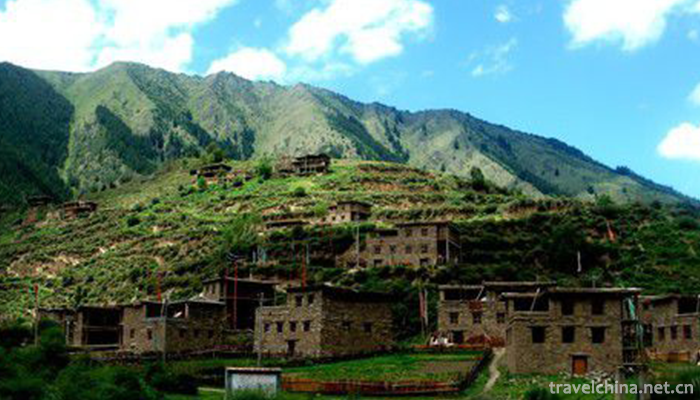
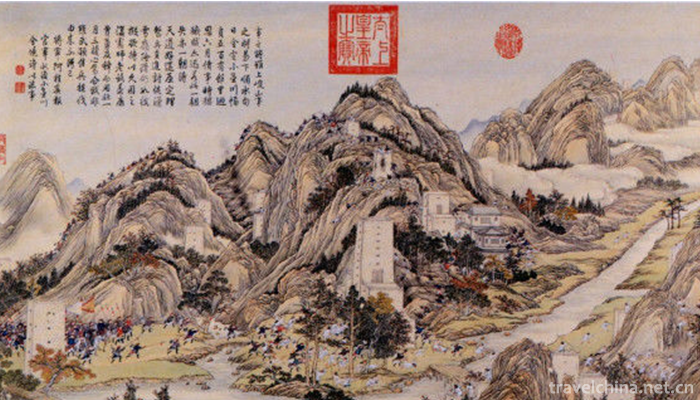
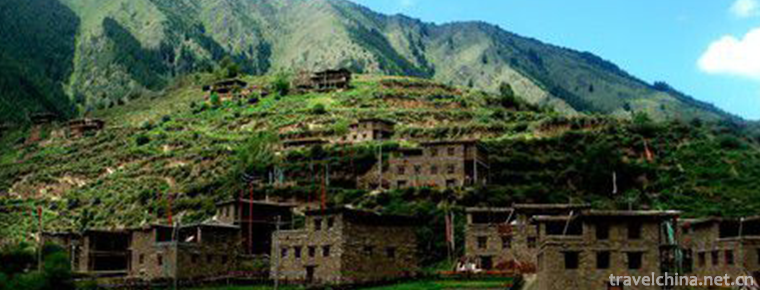
Construction Techniques of Tibetan Diaolou
-
Stinky mandarin fishMarinate mandarin fish
Stinky eel, also known as Stinky Osmanthus, Barrel Fresh Fish, Barrel Fresh Fish, Pickled Fresh Fish, is a traditional Huizhou dish, one of the representatives of Huizhou cuisine.
Views: 296 Time 2018-11-02 -
qingming riverside landscape garden
Qingming Shanghe Garden is a large Song Dynasty cultural theme park constructed by the people's government of Kaifeng City in Henan Province
Views: 292 Time 2018-12-09 -
Four Seasons Hotel Shenzhen
Four Seasons Hotel is an international luxury hotel management group, headquartered in Toronto, Canada. It was founded by Mr. Isado Sharp in 1961. Now it has more than 90 hotels and resorts in nearly
Views: 399 Time 2018-12-16 -
Yuanyi Shuangfeng Lake International Tourist Resort
Yuanyi Shuangfeng Lake International Tourist Resort in Anhui Province is a high-level tourist resort integrating Golf and leisure. Located in the beautiful scenery, with a total area of more than 2000
Views: 150 Time 2018-12-23 -
maoming forest park
Maoming Forest Park is located in the western suburb of Maoming City, Guangdong Province. It is only 12 kilometers away from the urban area and covers an area of more than 4500 mu
Views: 220 Time 2019-02-07 -
Historic Architectural Complex in Heaven and Earth
Historic buildings in Tiandi, World Cultural Heritage, National Key Cultural Relics Protection Units and National AAAAA Tourist Scenic Spots are located in the hinterland and surrounding
Views: 274 Time 2019-02-21 -
dough figurine
Noodles, also known as face sculptures, models and flowers, are simple but highly artistic Chinese folk crafts. As early as the Han Dynasty, Chinese face sculpture art has been written down. It uses f
Views: 145 Time 2019-06-05 -
Advertising for rent
There are six advertising spaces for each article, first come, first served.
Views: 377 Time 2019-08-30 -
Anhui University Of Science & Technology(aust)
Anhui University Of Science And Technology is located in Anhui province. Huainan City Yes. Anhui higher education revitalization program Local characteristics High level University Construction, proje
Views: 564 Time 2019-10-10 -
Bowang mountain
Bo (B ó) Wang mountain, also known as Bowang mountain. Bowang mountain is one of the most important breeding and living places of the ancient Bo nationality. It was known as lunzhudadun and shitoudazhai in ancient times
Views: 170 Time 2020-10-16 -
Music that Ding Zhen likes
Zhaxi Dingzhen (Chinese Name: Ding Zhen), Tibetan, lives in Litang County, Ganzi Prefecture, Sichuan Province.
Views: 251 Time 2020-12-07
